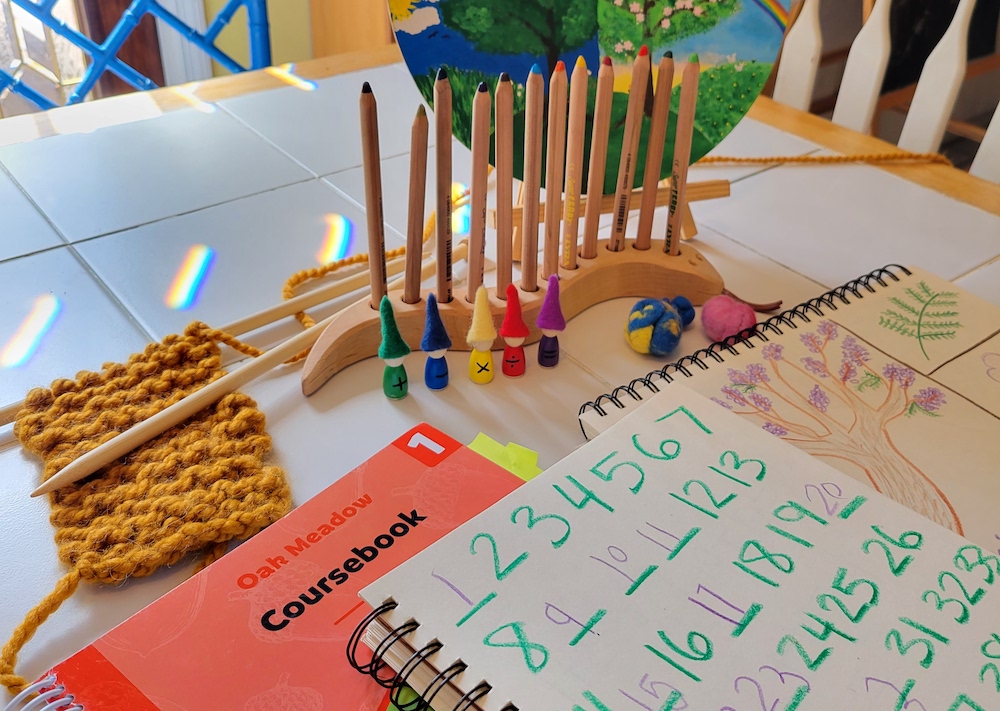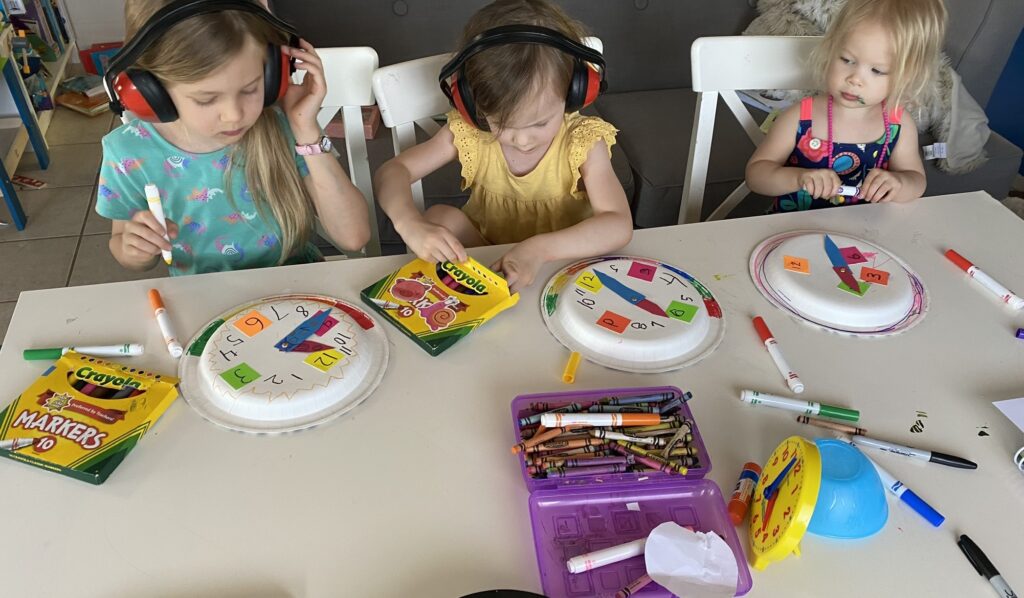Homeschooling is all about finding the right fit: finding what works for each child, for the homeschooling parent, and for the family’s lifestyle and values. Luckily, homeschooling has gained mainstream popularity in the last decade and the resources for homeschoolers have exploded into a veritable feast of choices.
There are curriculum choices for every learning style, family value, and educational goal. Not only that, but there are so many amazing, experienced homeschoolers sharing their ideas and wisdom via websites, blogs, books, magazines, and journals that homeschooling in many ways is easier than ever before.
But how do you choose from all these fantastic options? How can you tell if a certain curriculum or homeschooling style will work for your family? How do you know if your child will respond well to a traditional approach, an eclectic style, or boxed curriculum? What’s the difference between interest-led learning, roamschooling, and unschooling? Starting out as a new homeschooler, it can all be more than a little bewildering and overwhelming.
Take a deep breath and relax. Here’s some help—a handy list of the basic styles of homeschooling, how each works, and who might like it best.
Find Your Homeschooling Style
Boxed curriculum:
Having all the lesson plans for each subject for a full year in one place can be the best way to help you feel comfortable about homeschooling and confident about your ability to do it well. Getting a full set of curriculum books doesn’t mean you can’t have any input or follow your child’s interests, though. It just means you have something to fall back on and have a general plan to your days and weeks that reassures you that there won’t be any big gaps in your child’s education. It also makes it really easy for your child to see what needs to be done, and for you to organize your year-end reporting to the state.
There are many different types of boxed curricula, from religion-based to literature- or history-based to creative and integrated (like Oak Meadow). Boxed curriculum can include assignments that range from hands-on projects to worksheets and tests so the kind of student this approach works well for depends on what type of curriculum you choose. Using a boxed curriculum is a good fit for parents new to homeschooling and want everything planned out for them, or for those who would rather spend time enriching the homeschooling experience than creating it from scratch.
Eclectic homeschooling:
A lot of veteran homeschoolers find themselves doing a bit of this and a bit of that, choosing from a wide variety of sources to help each child learn best. This eclectic style can work especially well in larger families because you will naturally acquire a great deal of curriculum over the years. You might find that a particular math program works very well for your family, and you like the science labs from a certain website. You might use literature to teach history, and find a writing program that appeals to you. In this way, you piece together a complete curriculum from an eclectic array of resources based on your child’s learning preferences and educational needs. The eclectic approach works very well for parents who are comfortable with a little more flexibility and who have the time, energy, and willingness to seek out resources and design a comprehensive program from diverse materials.
Traditional schooling at home:
While relatively few homeschoolers try to replicate a traditional classroom approach at home, there are many who use textbooks, workbooks, worksheets, and tests with great success. Textbooks usually present a topic in a well-organized, comprehensive way and many have accompanying workbooks with related assignments and fill-in-the-blank worksheets.
You might want to forgo textbooks and use worksheets to accompany learning from other sources (such as literature, research books, and the internet). Having worksheets allows kids to be self-paced because skills are presented in a very organized progression, and you can easily grade the worksheets and see where more help is needed. Many kids, especially those who respond well to repetitive drills, find worksheets to be satisfying because they often focus on one skill at a time, and many parents like worksheets because they can have time to work one-to-one with a child while the others are busy on their own. Many families find that worksheets work particularly well for math since most students need a fair amount of repetition to build math skills.
The traditional school approach works best for families who prefer a highly organized structure, and for students who can sit for a focused period of time and who learn best through written information and instructions.
Interest-led learning:
Interest-led learning means allowing your child’s interests to guide the direction of the studies. The beauty of interest-led learning is that you can introduce core academic skills (such as grammar or fractions) in relation to topics that your child is naturally drawn to. Of course, this means more work for the parent but it’s not as hard as it sounds.
As adults, we already understand how much something like math or good writing skills come in handy in daily life, so incorporating these elements into a project of your child’s making—say, a dinosaur stop-action film or a storyboard for a new video game—can be pretty seamless. You can use resources like math books or grammar books; in fact, you’ll probably find yourself acquiring a large selection of supplements and research books. Interest-led learning is a great fit for students who love to dive into a topic wholeheartedly and for parents who are in a position to support their child’s learning in imaginative ways.

Roamschooling:
This word conjures up fantastic images of taking your learning out into the world, and that’s exactly what it is. Roamschooling is often a combination of interest-led learning and unschooling. At its core, it is simply learning by exploring the world. Your explorations don’t have to take you far, but often families travel across the country or around the world while roamschooling (sometimes this is called roadschooling).
This style of homeschooling often works very well if the parents have jobs that require travel or if their work allows them to live anywhere. As you can imagine, the sky’s the limit with roamschooling and everyone does it differently. Many parents are most comfortable when they have a basic idea of the core academic skills they want their children to acquire along the way, and with a basic idea in mind, it’s relatively easy to supplement as needed to make sure all the bases are covered.
Learning through travel adventures and/or community explorations offers educational opportunities that take kids far beyond the basics. Roamschooling is a great option for students who are naturally social, active, and outgoing, and for parents who are comfortable with not knowing where the day will lead.
Unschooling:
Unschooling, which seems to be gaining popularity, is the perfect antidote to school burnout. There is something very healing about letting children revert back to learning because they want to rather than because they have to. The unschooling approach allows children to learn by living and doing and doesn’t require them to pass specific benchmarks or acquire certain skills.
Of course, kids who are following their own interests and learning as they please often pick up most of the academic basics along the way. They might realize they need to know something about fractions and geometry if they are going to build a really sturdy treehouse, so they take the time to learn. Many unschoolers become excellent readers with an extensive vocabulary. Some parents make sure there are books about math, grammar, history, etc. available but don’t assign required reading. Others assign a minimum of schoolwork to make sure the bases are covered and let their children unschool the rest of the time. Unschooling works particularly well for self-motivated students who love to learn by doing, and for parents who trust that the learning process will unfold naturally if a child is given the time and space to explore life.
There are many more categories of homeschooling that could be added to this list but this gives you a good idea of the possibilities. Most families who homeschool for more than one year end up using a combination of these approaches as time goes by. Since children change as they grow, and family circumstances and opportunities change, it makes sense that our homeschooling will change over time, too.
As parents, we often get a good sense of what will or won’t work with our children, but sometimes we have to experiment with different homeschooling methods before we find the right fit. What works one year with one child might not work the next year with the next child (or even with the same child!). Don’t be afraid to try something new.
As your children get older, they can have a say in their education, too. Trust them. Trust yourself. Learning will happen—it’s as much a part of being human as breathing.
Your turn: If you are new to homeschooling, what style do you feel drawn towards? If you have been homeschooling for a while, what works well for your family? Has your homeschooling style evolved over the years?
See also Finding the Right Fit, Part II: How Oak Meadow curriculum can help you on your homeschooling adventure.

